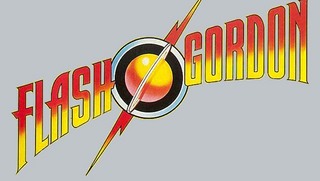
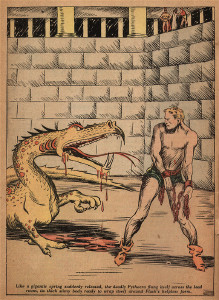
Flash Gordon sprang from the mind of Alex Raymond, who developed the character for a comic strip in the “King Features” newspaper in 1934. Flash was advertised as a “fair-haired spaceman” who, along with his girlfriend Dale Arden, had adventures on the planet Mongo and other exotic locations. The newspaper paid Alex $15 a week for the comic strip but also insisted that he assist as a syndicated staff artist to receive full payment. During his time with the newpaper, Raymond also created Secret Agent X-9, Jungle Jim, Rip Kirby, and several failed comic strips about police squads fighting crime in the big city.
Flash gained an unusual amount of praise in 1936 by politicians who associated the storyline, with its emphasis on aerial fighting ships, with the New Deal. Consequently, Flash surpassed the popularity of Buck Rogers, an older but very successful comic strip. Universal bought the rights to Raymond’s creation and turned it into a major motion picture with a budget of $350,000, roughly twice that of other serial films at the time.
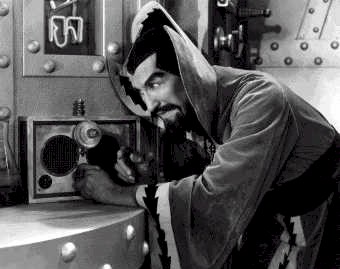
Larry “Buster” Crabbe and Jean Rogers brought the main characters of Flash Gordon and Dale Arden to life where they faced the emperor Ming, a tyrant who ruled the universe from the planet Mongo.
The serial was such a huge success that Universal continued the adventures in another serial set in 1938 that was later edited into the feature film, Flash Gordon’s Trip to Mars. In the second serial, directed by Ford Beebe and Robert F. Hill, Flash fought to save Earth from Ming the Merciless who had begun raiding Earth to steal its oxygen supply.
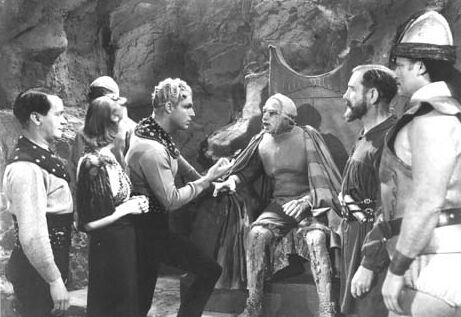
Ford Beebe managed to convince Universal to give the serial a last fling. In 1940, they released a last set which was later edited into the feature film Flash Gordon Conquers the Universe. In this adventure, Flash again battled Ming the Merciless who met his doom in a very weak sequel. With Ming dead and the studios losing interest in Flash, the franchise fell silent.
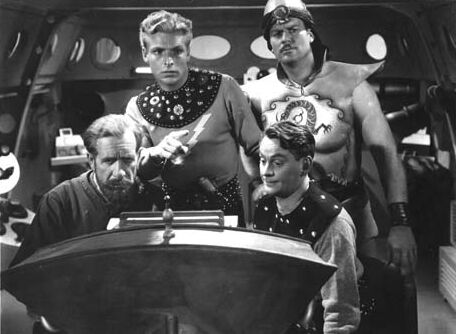
In 1951, Dan Barry resumed the comic version of Flash Gordon, providing his space adventures in both newspapers and comic books. These ran until 1967, when Dan Barry died. In those years the comic books gained the contributions of Al Williamson, Frank Frazetta, Fred Kida, Bob Fujitani and Harry Harrison.
Directors Howard Ziehm and Michael Benveniste looked to the classic Flash Gordon serials for their 1972 soft-porn version, Flesh Gordon. In this adventure Flesh fought to defeat Wang the Perverted and his Sex Ray. The humor and acting in this production were poor but the animated creatures, models, and special effects were outstandingly done by some of the founders of Industrial Light and Magic.
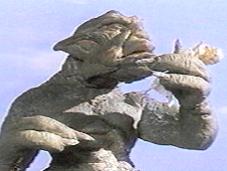
Flash had a small revival when the original 1936 story was retold with variations in The New Adventures of Flash Gordon, a cartoon version of the story released in 1979 by Filmation Productions. This cartoon featured all of the original characters and detailed how Flash and his companions traveled to the planet Mongo, where they were forced to battle its ruler, Ming the Merciless, and his army of robots. To help their cause, the heroes formed an alliance with King Thun, leader of the Lion People, Prince Barin, leader of Aboria, and King Vultan, ruler of the Hawkmen.
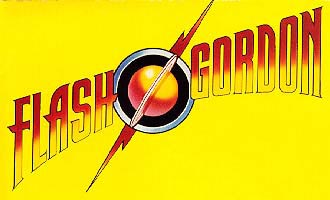
A year later, in 1980, Dino De Laurentis decided to bring Flash back to the big screen in a big-budget box-office sleeper that lost money. More folks remembered the main title song by Queen (“Flash …. AHHHHH!”) than the movie itself. Sam Jones played Flash Gordon, with Melody Anderson as a stunning Dale Arden playing opposite a wonderfully evil Max Von Sydow as Ming The Merciless.
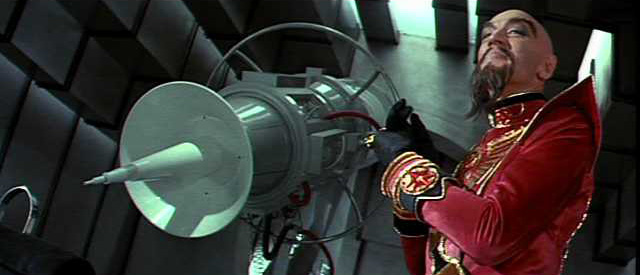
The story was a close tribute to the original, in which Ming the Merciless opts to destroy Earth out of sheer boredom, and Flash, Dale, and Dr. Zarkov gather the other denizens of Mongo to revolt against him. The film reflects the bigger-than-life Queen soundtrack, with the characters and action played extremely broadly, even campy, and lacking any real sense of danger or fear … but it is fun, fun, fun.
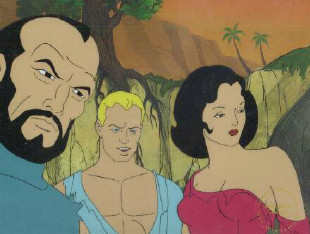
In 1986, Flash faced his greatest indignation to date in another Filmation Productions cartoon series in which he became one of the four “Defenders of Earth”. In this storyline, he fought alongside Mandrake the Magician and The Phantom. In this cartoon, Flash played a minimal role to the forth hero, his son Rick, who always seemed to get the upper hand over his old man.
In 1991, Howard Ziehm made a sequel the 1972 “Flesh” Gordon in a sequel called Flesh Gordon and the Cosmic Cheerleaders. This film was a lame attempt to capitalize on its predecessor’s success and failed badly.
The most recent attempt to return Flash Gordon to a live-action production was in 2007 by Peter Hume and The Sci-Fi Channel. Arguably a greater indignation than the Defenders of Earth cartoon, this Flash Gordon bore no resemblance to the Flash Gordon‘s of the past, even the over-the-top 1980 film. Painfully slow and poorly written and executed, this series was done on the cheap and obviously so, and was almost universally panned by critics and fans alike.
Select your Portal: